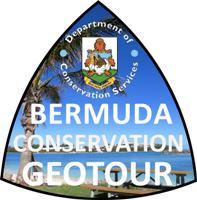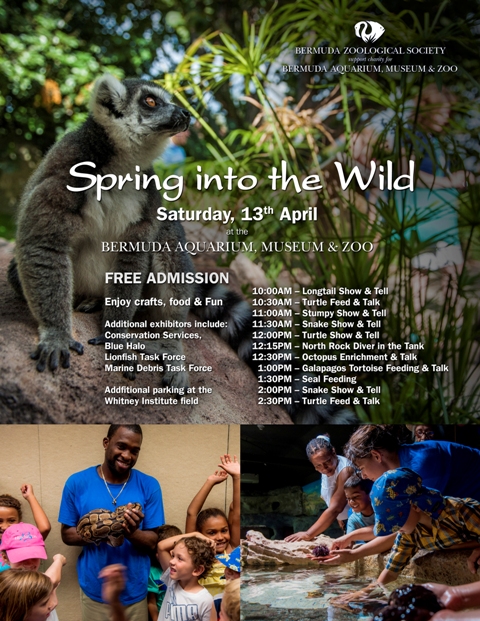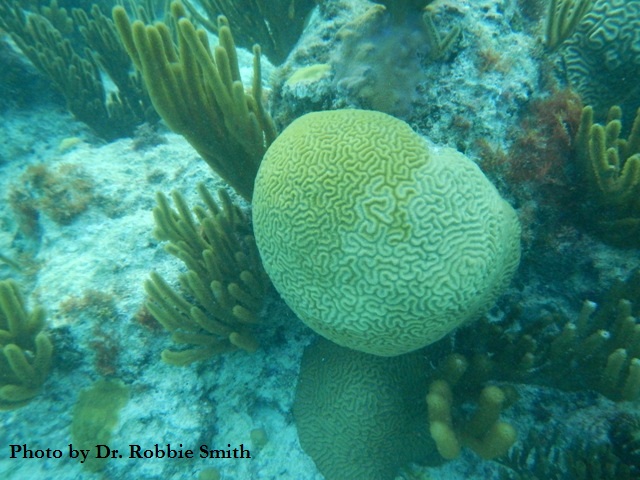 Brain coral beginning to bleach off Elbow Beach. Photo by Dr. Robbie SmithThe Department of Conservation Services (DCS) would like to alert the public of changes occurring on Bermuda’s coral reefs and in our inshore bays. Dr. Robbie Smith (Curator, Natural History Museum) has observed coral bleaching over the past several weeks. Corals, such as brain coral and fire coral have begun to lose their green/brown/yellow colours, appearing pale white or very white. This is quite evident in the fire corals living in the inshore bays.
Brain coral beginning to bleach off Elbow Beach. Photo by Dr. Robbie SmithThe Department of Conservation Services (DCS) would like to alert the public of changes occurring on Bermuda’s coral reefs and in our inshore bays. Dr. Robbie Smith (Curator, Natural History Museum) has observed coral bleaching over the past several weeks. Corals, such as brain coral and fire coral have begun to lose their green/brown/yellow colours, appearing pale white or very white. This is quite evident in the fire corals living in the inshore bays.
Coral bleaching is a response of the corals to unusual and continuous warm water temperatures over a prolonged period of time, a result of the low wind speeds over the past few weeks. The warm water is a stress for some coral species and causes them to expel their symbiotic microscopic algae, called zooxanthellae, which actually provide the rich colouration of corals. The corals are not dead and should recover their colour in September and October. But, this assumes that warm water stress diminishes soon. Studies in the Caribbean in the 1990s and early 2000s did record coral mortality when temperature stress 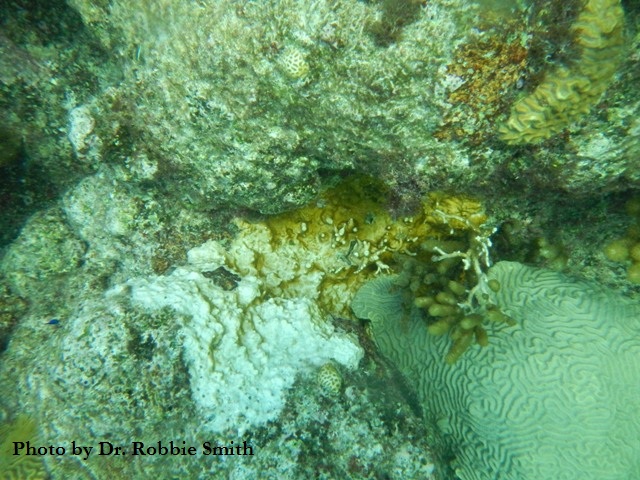 Bleached fire coral off John Smith's Bay. Photo by Dr. Robbie Smith. exceeded 2 to 3 months. We will continue to monitor this event on our reefs in the coming months.
Bleached fire coral off John Smith's Bay. Photo by Dr. Robbie Smith. exceeded 2 to 3 months. We will continue to monitor this event on our reefs in the coming months.
Dr. Sarah Manuel and Dr. Jan Locke (DCS) have analyzed seawater temperatures recorded by in situ data loggers deployed at permanent monitoring sites across the Bermuda Platform. The data show a rapid rise in seawater temperature in June and early July, nearly 3 C0 higher than last year at the same time. The water temperature continued to rise to 30 0C in July and, as illustrated in their graph below, these high temperatures have not been seen at this time of year since 2010.
Temperatures from July to mid-August of this year have actually exceeded temperatures recorded since 2007. Most interesting was a very rapid drop in temperature in the first week of August and then another warming phase.
These rapid fluctuations are additional stress to corals and may have triggered the start of the bleaching. In most years, the passage of hurricanes and tropical storms in August and September has caused mixing of the waters around Bermuda which brings up cooler deep water. This reduces the temperature stress on corals and prevents bleaching from occurring.
 Graph by Dr. Jan Locke and Dr. Sarah Manuel, Marine Ecology Section, Department of Conservation Services
Graph by Dr. Jan Locke and Dr. Sarah Manuel, Marine Ecology Section, Department of Conservation Services
The first bleaching event observed in Bermuda was in 1988. The last significant bleaching event was in 2003, with other episodes in 1998 and 1993. A mild event was noted in 2009, which the temperature records show as another year of peak temperatures in August. It has been normal for some corals to bleach each summer and the fire coral is often the first species to be affected.
Reef scientists believe that bleaching is an adaptive response that allows the corals to acquire different genetic strains of the symbiotic zooxanthellae and create a more robust partnership, better able to cope with the environmental stress.
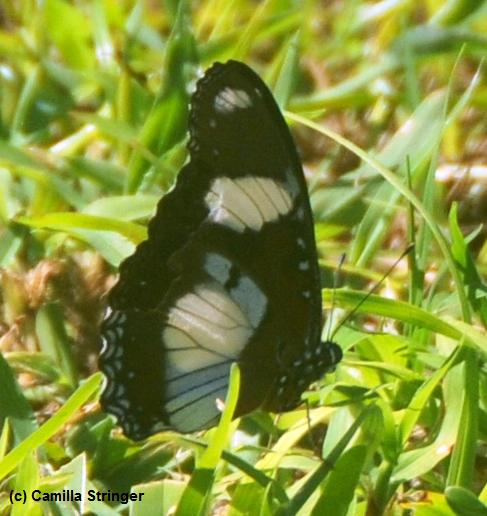 BZS volunteer Camilla Stringer photographed this butterfly, a male Danaid Eggfly or Mimic Butterfly (Hypolimnas misippus) on Oct. 11th at Spittal Pond. The male of this species is dark with large white spots, while the females vary from dark with white spots to an orange and black form which closely mimics the Monarch Butterfly.
BZS volunteer Camilla Stringer photographed this butterfly, a male Danaid Eggfly or Mimic Butterfly (Hypolimnas misippus) on Oct. 11th at Spittal Pond. The male of this species is dark with large white spots, while the females vary from dark with white spots to an orange and black form which closely mimics the Monarch Butterfly.




